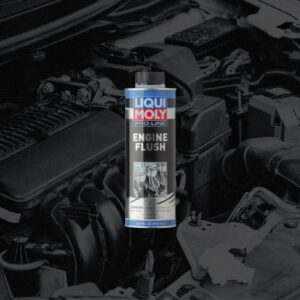If your engine runs very low on oil, running the engine for just a short amount of time will cause irreversible damage. Checking oil levels is a means of ensuring that your engine never reaches this point. That said, you might be wondering how frequently you should be checking your oil. We’ll discuss how to check your engine oil and how often you should do so in this article.
When Should You Check Your Engine Oil?pr
Every Month
Checking your oil monthly is generally considered good practice. However, there isn’t anything wrong with checking your engine’s oil more frequently.
Of course, it goes without saying that if your engine is using oil (like on an older vehicle or on some 2011-2014 Kia platforms), you need to check the oil as often as once a week or even every day, depending on the severity of the problem.
If your engine is using oil (like on an older vehicle or on some 2011-2014 Kia platforms), you need to check the oil as often as once a week or even every day, depending on the severity of the problem.
–Richard McCuistian, ASE Certified Master Automobile Technician
Before a Long Drive
If you’re planning a long drive, check your oil before the trip. Just like checking your tire pressure, making oil checks a habit is good practice before a long drive.
If your engine is using or leaking oil, realize that an engine operating with low oil levels will break the oil down over twice as rapidly as an engine with the proper oil level in the crankcase. Continuing to drive with low oil levels won’t just cause excessive wear. You might also continue to drive with a persisting issue, which can cause oil levels to drop further and result in major issues.
When You Encounter Engine Issues or Low Oil Symptoms
Various engine issues can cause your engine oil levels to go down. These include having worn gaskets or seals, worn-out piston rings, or worn-out intake or exhaust valves.
These issues will typically show symptoms such as the following:
- Stalling (keep in mind: if it does this because it’s low on oil, the engine is gone)
- Engine knock or clunking noises
- The smell of burning oil
- Illuminated oil pressure warning light (engine is badly damaged by this time)
- Low oil level warning
Vehicles also have an oil pressure warning light located on the gauge cluster to warn you when oil levels are dangerously low. If you see this light illuminate or observe any of the previously mentioned symptoms, then you should check your vehicle’s oil levels immediately. Engine damage can occur just after five to 10 minutes of driving with low oil levels.
Why Checking Your Oil Regularly Is Necessary
Conducting regular oil checks is necessary because engines can sometimes excessively consume oil during regular use.
Some manufacturers won’t repair an engine under warranty unless it is using an awful lot of oil. This is a quote from a 2022 article:
“Volkswagen and Audi recently declared that 1 qt. of engine oil consumption every 650 miles is normal. General Motors states that 1 qt. of engine oil consumption every 2000 miles is acceptable, while Ford came out with a statement that 1 qt. of engine oil consumption every 1000 miles is acceptable.”
Other than oil leaks, oil consumption is usually due to piston ring issues, valve stem seals, or even PCV system concerns.
Regular oil checks are also useful since low oil levels are a litmus test of whether something is wrong. If you notice a sudden drop in oil levels, then you should be concerned because your engine might have an issue.
How to Check Oil Levels Properly
- Park the car for the recommended duration of time – First, let’s establish the fact that on some vehicles (like, for example, the 99-2014 Vortec Engines in Chevy Trucks), you shouldn’t check the oil level unless the vehicle has been parked and not started for several hours – or better yet overnight. The oil on these engines doesn’t return to the oil pan quickly, and many owners have overfilled their crankcases because they checked the engine oil too soon after driving the vehicle.
- Locate the dipstick – To check your oil properly, ensure that your vehicle is parked with the engine turned off. To locate the oil dipstick, just look for a plastic handle that sticks out from your engine (sometimes the plastic handle is brightly colored). It will be on the side of the engine or near the front or sometimes right in the top of the valve cover; a dipstick at the back of the engine will be for the automatic transmission fluid. This plastic handle is also marked with an oil can symbol.
- Wipe the oil off the dipstick – Pull the oil dipstick out of its housing and wipe the oil off the dipstick. The lower line on the dipstick indicates that oil levels are one quart low, except on 7.3L Power Stroke diesels, where this line indicates that it is 2 quarts low (15 quart crankcase). Meanwhile, the upper line means that the engine’s crankcase is full. Some manufacturers mark dipsticks with words like “add” or “full.”
- Reinsert the dipstick – Slowly re-insert the dipstick into the engine and push it all the way to the end. If it seems to hang, flip it over and insert it the other way. Some dipsticks have a twist to mitigate this. Others never hang going back in. Some dipsticks are a stiff cable with a plastic end that has the oil level indicators on it.
- Read the oil level – If the oil is between the two lines or at the top line on the dipstick, your engine has sufficient oil. However, if the oil is on or below the lower line, then you should add a quart of oil.
The best time to check your oil is before you drive or turn on your vehicle. However, if this is unavoidable, ensure that your engine isn’t too hot before you pop the hood and check the oil. If you’ve driven your vehicle, you should let your engine rest for at least 10 minutes. Doing this will prevent you from getting burns, as oil can reach temperatures of 250 degrees Fahrenheit.
Letting the engine rest for a few minutes after a drive will also let the oil accumulate in the engine’s oil pan, which will let you get accurate oil levels. That said, you should double-check your vehicle owner’s manual. Some manufacturers recommend checking oil levels while the oil is still hot. Others want it to sit for several hours. Find out which is required for your vehicle.
Get High-Quality Oil for Your Ride
Engines can sometimes lose oil when there’s a faulty part or if there’s been a leak. Whatever the case, you need to top up your oil once they’re less than ideal. Otherwise, you risk running your engine with low oil levels, which can destroy your engine. Most engines require a specific oil viscosity. Luckily, finding the right oil for your vehicle is easy here at CarParts.com.
You won’t have trouble looking for the right motor oil because CarParts.com has a wide selection of oil viscosities and types from different brands, like Liqui Moly and GenuineXL. Unsure what motor oil you need? Simply enter your vehicle’s year and model in our vehicle selector and we’ll show you a list of compatible motor oils. If you have questions about our products, our customer service team is available 24/7 to assist you.
Get the right motor oil here at CarParts.com and top up your engine’s oil levels now!
Any information provided on this Website is for informational purposes only and is not intended to replace consultation with a professional mechanic. The accuracy and timeliness of the information may change from the time of publication.

































